How to Grow Lima Beans: Simple Guide for Beginners
- March 5, 2024
- 0 comment
Lima beans, also known as butter beans, are a nutritious and versatile legume that can be a delightful addition to any home garden. These beans are not only a staple in many cuisines but are also packed with protein, fiber, and various vitamins and minerals. Growing lima beans is relatively straightforward, making them a great choice for both novice and experienced gardeners. This article will guide you through the process of planting, caring for, and harvesting lima beans.
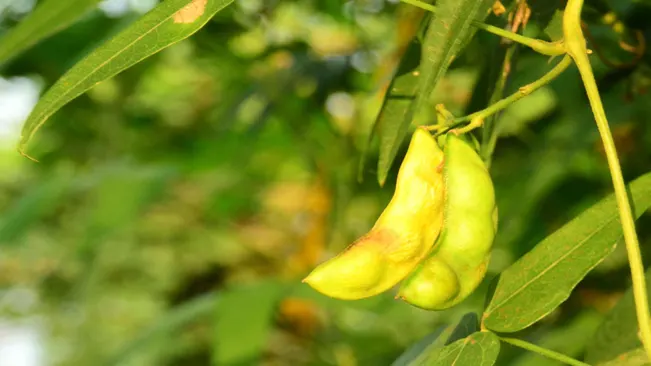
Nutritional Benefits of Lima Beans
| Benefit | Description |
|---|---|
| High in Protein | Lima beans are a great source of plant-based protein, essential for muscle building and repair. |
| Rich in Dietary Fiber | They are high in fiber, which aids in digestion and helps in maintaining a healthy gut. |
| Low in Fat | Lima beans are low in fat, making them a healthy addition to a weight management diet. |
| Heart Health | The fiber, potassium, and magnesium in Lima beans contribute to heart health by helping to lower blood pressure and cholesterol levels. |
| Blood Sugar Control | Their high fiber content helps in regulating blood sugar levels, beneficial for diabetics. |
| Rich in Iron | Lima beans are a good source of iron, which is crucial for maintaining healthy red blood cells and preventing anemia. |
| High in Potassium | They are high in potassium, which is essential for muscle function and maintaining a healthy nervous system. |
| Good Source of Folate | They provide a good amount of folate, important for pregnant women and contributes to overall cell growth and DNA synthesis. |
| Contains Antioxidants | Lima beans contain antioxidants that help in fighting free radicals, reducing oxidative stress and inflammation. |
| Gluten-Free | Being naturally gluten-free, Lima beans are a great food choice for those with gluten intolerance or celiac disease. |
List on How to Grow Lima Beans
- Choosing the Right Variety
- Planting Lima Beans
- Caring for Your Lima Beans
- Pest and Disease Management
- Harvesting Lima Beans
Choosing the Right Variety
Lima beans come in two main varieties: bush beans and pole beans. Bush beans are more compact and usually do not require staking, making them ideal for smaller gardens or container gardening. Pole beans, on the other hand, grow as vines and will need support such as a trellis or poles. Select a variety that best fits your garden space and climate.
Bush Beans
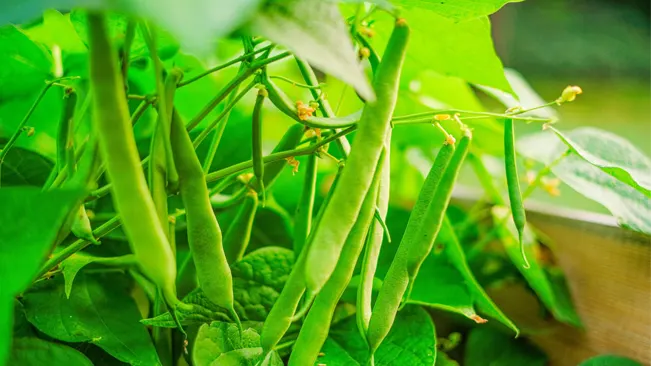
- Characteristics: Bush Lima beans are more compact and grow in a bushy form. They generally reach about 1 to 2 feet in height. Their compact nature means they’re less likely to become entangled with nearby plants, making them easier to manage.
- Growth Requirements: They do not require staking or support structures, which simplifies the growing process. This characteristic makes them ideal for gardeners who prefer a lower-maintenance plant or those with limited space.
- Harvesting: Bush varieties tend to mature all at once, or over a short period, making them a good choice if you prefer to harvest your beans at one time.
- Ideal For: These are perfect for smaller gardens or container gardening. If you have a balcony garden or a small backyard, bush beans can be a practical choice.
Pole Beans
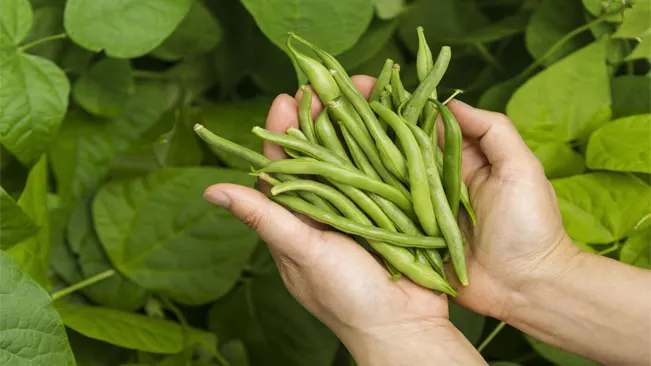
- Characteristics: Pole Lima beans grow as climbing vines and can reach heights of 10 to 12 feet. They are known for their vigorous growth and can produce beans over a longer period than bush varieties.
- Growth Requirements: They require a support structure, like a trellis, poles, or a fence, for the vines to climb. This vertical growth can be an efficient use of space and can add an attractive element to your garden.
- Harvesting: Since pole beans continue producing over a longer period, they are ideal if you prefer to harvest your beans gradually throughout the growing season.
- Ideal For: These are suitable for larger garden spaces or where vertical gardening is possible. They are a great option if you’re looking to maximize your yield in a limited ground space.
Climate Considerations
Both bush and pole Lima beans thrive in warm weather and do not do well in cold temperatures. However, the choice between bush and pole varieties may also depend on your local climate:
- In cooler regions with a shorter growing season, bush beans might be more suitable as they mature faster.
- In warmer climates with a longer growing season, pole beans are an excellent choice due to their prolonged harvesting period.
Planting Lima Beans
Timing
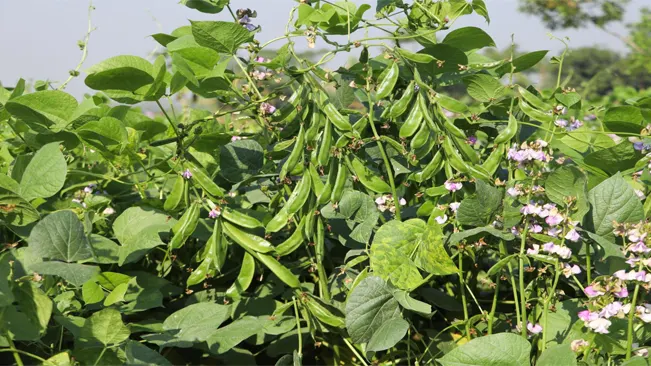
- Importance of Soil Temperature: Lima beans are sensitive to cold temperatures. Planting them in soil that is too cold can lead to poor germination and growth. That’s why it’s crucial to wait until the soil is sufficiently warm.
- Checking Soil Temperature: You can use a soil thermometer to check the temperature. Planting should be done when the soil consistently stays above 65°F (18°C), typically a few weeks after the last frost date in your area.
Soil Preparation
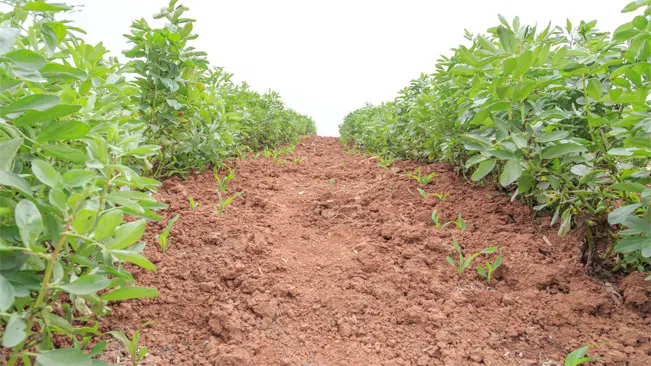
- Sunlight Requirements: Lima beans need full sunlight, so choose an area in your garden that receives at least 6-8 hours of direct sunlight daily. The more sunlight they receive, the better they will grow.
- Soil Drainage: Good drainage is key to prevent waterlogging, which can cause root rot. If you have heavy or clay soil, consider raising your beds or incorporating sand to improve drainage.
- Soil pH and Fertility: Lima beans do best in slightly acidic to neutral soil. You can test your soil’s pH and adjust it if necessary. Adding organic matter like compost or aged manure not only helps in adjusting the pH but also improves soil structure and fertility, providing essential nutrients for the beans.
- Preparing the Bed: Loosen the soil to about 12-15 inches deep and mix in the compost or manure. This helps the roots to penetrate and spread easily in the soil.
Sowing Seeds
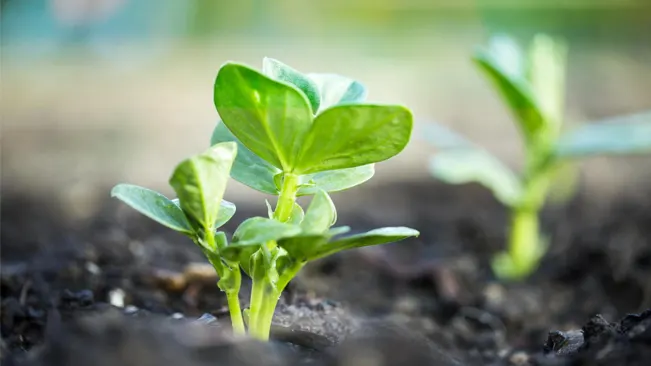
- Planting Depth and Spacing: Planting seeds 1 inch deep helps in proper germination. Spacing them 3 to 6 inches apart allows sufficient room for growth. If planting in rows, maintaining a distance of about 2 feet between rows is recommended for easy access and air circulation.
- Number of Seeds per Hole: You can plant 1-2 seeds per hole. If both seeds germinate, you might need to thin out the weaker seedling to give the stronger one more room to grow.
- Watering After Planting: Water gently right after planting. The soil should be moist but not waterlogged. Consistent moisture is important for germination, so keep the soil evenly moist during this period.
Caring for Your Lima Beans
Watering Lima Beans
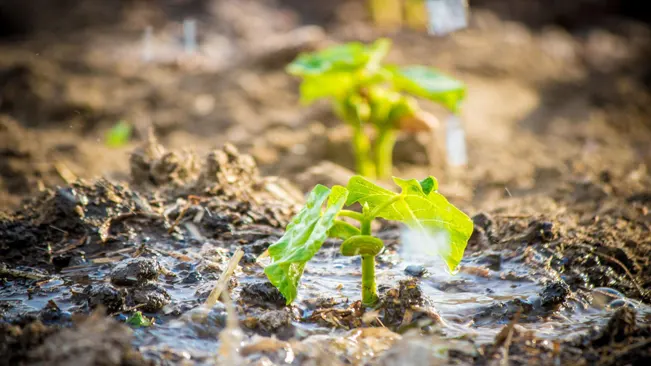
- Consistency is Key: Lima beans require a consistent amount of water throughout their growing period. This is especially crucial during the flowering stage and when the pods are developing, as inconsistent watering can lead to poor pod development.
- How Much to Water: Aim to keep the soil moist but not waterlogged. About 1 inch of water per week is usually sufficient, but this can vary depending on your soil type and weather conditions.
- Monitoring Soil Moisture: Check the soil moisture regularly. If the top inch of soil is dry, it’s time to water.
- Watering Technique: Use a soaker hose or drip irrigation for watering. This method helps to deliver water directly to the roots and prevents the leaves from getting wet, which can reduce the risk of disease.
Mulching
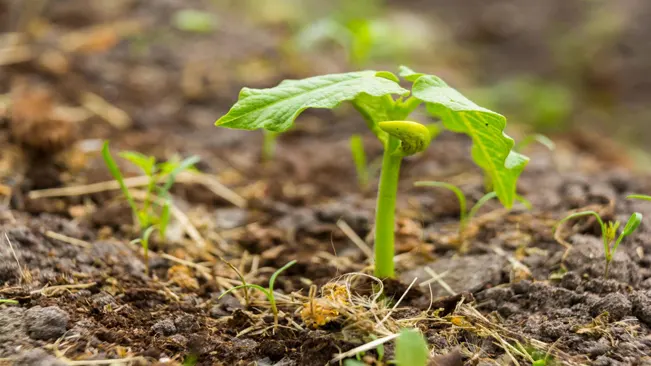
- Purpose of Mulching: Mulching helps to retain soil moisture, suppress weeds, and can also help regulate soil temperature.
- Types of Mulch: Organic mulches like straw, grass clippings, or shredded leaves are ideal. They not only retain moisture but also add organic matter to the soil as they decompose.
- Application: Apply a 2-3 inch layer of mulch around the base of the plants, being careful not to pile it up against the stems to avoid rot.
Support for Pole Beans

- Importance of Support: Pole beans are climbers and will require support for proper growth. This support helps to keep the plants upright, promotes air circulation, and makes harvesting easier.
- Types of Support: Use stakes, trellises, or a sturdy fence for the beans to climb on. Ensure the support is in place at planting time to avoid disturbing the roots later.
- Training the Vines: Gently guide the young vines towards the support structure. They will naturally start to climb as they grow.
Fertilizing
- Nutrient Requirements: Lima beans do not require a lot of additional fertilizers if planted in rich soil. They are light feeders and too much fertilizer, especially nitrogen, can promote leaf growth at the expense of pod production.
- When to Fertilize: If your soil is poor, consider adding a balanced, low-nitrogen fertilizer at planting time. You can also side-dress with compost or a balanced organic fertilizer as the plants begin to flower.
- Avoiding Over-fertilization: Excessive use of fertilizer can lead to lush foliage but fewer beans. It’s important to strike a balance based on the natural fertility of your soil.
Pest and Disease Management
Common pests include aphids and spider mites. Diseases like root rot and powdery mildew can also affect lima beans. Practice crop rotation and use organic insecticides or fungicides if necessary. Keep the area around the plants clean and free of debris to prevent the spread of diseases.
Pest Management
- Aphids: These small, sap-sucking insects can cause leaves to curl and stunt growth. They often produce a sticky substance known as honeydew, which can attract ants and lead to sooty mold.
- Control: Introduce natural predators like ladybugs or use a strong water spray to dislodge them. Insecticidal soaps or neem oil can also be effective.
- Spider Mites: These tiny pests can cause speckled discoloration on leaves and severe infestations can lead to leaf loss.
- Control: Increase humidity around plants, as spider mites thrive in dry conditions. Use miticides or neem oil as a treatment. Regularly inspect the underside of leaves.
Disease Management
- Root Rot: This is usually caused by overwatering and poor drainage, leading to decay of the roots.
- Control: Ensure good soil drainage and avoid overwatering. Plant in raised beds if necessary. Use fungicides if the problem persists.
- Powdery Mildew: This fungal disease appears as a white powdery deposit on the leaf surface and can lead to distorted growth.
- Control: Improve air circulation around plants and reduce leaf wetness. Fungicides can be used, and it’s often effective to remove affected parts of the plant.
General Tips for Pest and Disease Management
- Crop Rotation: Avoid planting Lima beans in the same location year after year. This practice helps in breaking the life cycles of pests and diseases.
- Sanitation: Keep the garden area free of debris and weeds, which can harbor pests and diseases.
- Healthy Soil: Maintain a healthy soil with good organic matter. This not only improves drainage but also supports stronger plant growth, making them less susceptible to pests and diseases.
- Organic Insecticides and Fungicides: When needed, use organic options. These are usually less harmful to beneficial insects and the environment.
- Regular Monitoring: Regularly inspect your plants for early signs of pests and diseases. Early detection often allows for more effective and less invasive control methods.
Harvesting Lima Beans
Lima beans are typically ready to harvest about 60 to 90 days after planting. They can be harvested young as green beans or left to mature for dried beans. For fresh lima beans, pick the pods when they are plump and bright green. For dried beans, let the pods dry on the plant until they are brown and the beans rattle inside.
Harvesting Fresh Lima Beans
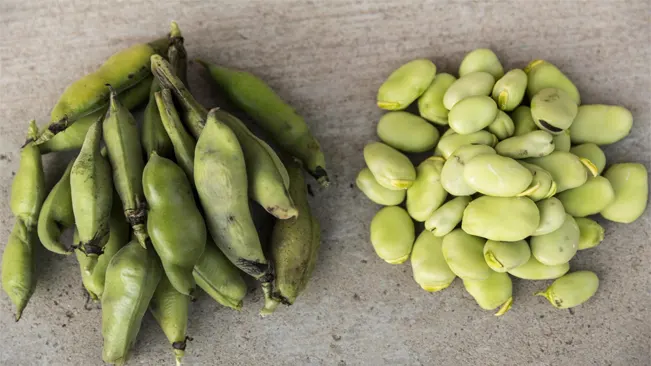
- Timing: Fresh Lima beans, also known as “baby Limas,” are harvested when the pods are still green but the beans inside have filled the pod. This is usually 60 to 70 days after planting.
- Identifying Ready Pods: Look for pods that are firm, plump, and a vibrant green color. The pods should feel filled out, and you can often see the shape of the beans inside.
- How to Harvest: Gently hold the plant with one hand and pull the pod with the other. Be careful not to damage the plant, as it will continue to produce more pods.
- Continuous Harvest: Lima beans often produce more beans if they are harvested regularly. Check your plants every 2 to 3 days for ready-to-pick pods.
- Usage: Fresh Lima beans are softer and cook more quickly than dried beans. They have a buttery texture and a delicate flavor, making them excellent for soups, stews, and salads.
Harvesting Dried Lima Beans
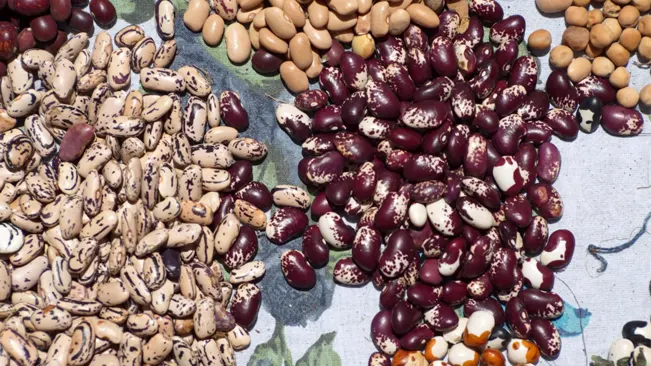
- Timing: For dried beans, you need to allow the pods to mature fully on the plant, which can take 90 to 100 days. The key is to let the pods dry out until they become brittle and brown.
- Identifying Dry Pods: The pods should be fully dry, and you’ll often hear the beans rattling inside when you shake them.
- How to Harvest: Pull or clip the pods from the vines. If the weather is dry, you can leave them on the plants to dry out as much as possible.
- Drying Process: After harvesting, spread the pods in a warm, dry place to further dry. This process can take a few weeks. Once dry, shell the beans by breaking open the pods and removing the beans.
- Storage: Store the dried beans in an airtight container in a cool, dry place. They can be stored for months and used in various recipes.
- Preparation: Dried Lima beans need to be soaked and cooked longer than fresh beans. They have a starchy, creamy texture and are often used in dishes like succotash, casseroles, and bean salads.
Conclusion
Growing lima beans can be a rewarding experience for any gardener. With their minimal care requirements and high yield, they are a great addition to any vegetable garden. Whether you enjoy them fresh, steamed, or dried, lima beans offer a healthy and delicious option for your home cooking.
FAQs (Frequently Asked Questions)
- What is the best time to plant Lima beans?
- Plant Lima beans after the last frost when the soil has warmed up, ideally when soil temperatures reach at least 65°F (18°C).
- Plant Lima beans after the last frost when the soil has warmed up, ideally when soil temperatures reach at least 65°F (18°C).
- How long do Lima beans take to grow?
- Lima beans typically take 60 to 90 days from planting to harvest, depending on the variety and growing conditions.
- Lima beans typically take 60 to 90 days from planting to harvest, depending on the variety and growing conditions.
- Do Lima beans need full sun?
- Yes, Lima beans require full sun, meaning at least 6-8 hours of direct sunlight per day, for optimal growth.
- Yes, Lima beans require full sun, meaning at least 6-8 hours of direct sunlight per day, for optimal growth.
- How much space do Lima beans need to grow?
- Plant seeds about 1 inch deep and 3 to 6 inches apart, with rows spaced about 2 feet apart. Pole varieties will need more space for their vines to climb.
- Plant seeds about 1 inch deep and 3 to 6 inches apart, with rows spaced about 2 feet apart. Pole varieties will need more space for their vines to climb.
- Do I need to support Lima bean plants?
- Bush varieties typically don’t need support. However, pole varieties will require a trellis, stakes, or a similar support structure for the vines to climb.
- Bush varieties typically don’t need support. However, pole varieties will require a trellis, stakes, or a similar support structure for the vines to climb.
- How often should Lima beans be watered?
- Water regularly to keep the soil consistently moist, especially during flowering and pod development. Avoid over-watering to prevent root rot.
- Water regularly to keep the soil consistently moist, especially during flowering and pod development. Avoid over-watering to prevent root rot.
- What type of soil is best for Lima beans?
- Lima beans prefer well-draining soil with a slightly acidic to neutral pH (6.0 to 7.0). Enrich the soil with compost or aged manure before planting.
- Lima beans prefer well-draining soil with a slightly acidic to neutral pH (6.0 to 7.0). Enrich the soil with compost or aged manure before planting.
- Do Lima beans have any common pests or diseases?
- Common pests include aphids and spider mites. Diseases like root rot and powdery mildew can also occur. Use organic pest control methods and practice crop rotation.
- Common pests include aphids and spider mites. Diseases like root rot and powdery mildew can also occur. Use organic pest control methods and practice crop rotation.
- Can I grow Lima beans in containers?
- Yes, Lima beans can be grown in containers. Ensure the container is large enough and has good drainage. Bush varieties are better suited for container gardening.
- Yes, Lima beans can be grown in containers. Ensure the container is large enough and has good drainage. Bush varieties are better suited for container gardening.
- How do I harvest Lima beans?
- For fresh beans, harvest when the pods are plump and firm. For dry beans, let the pods dry on the plant until they turn brown and the beans inside rattle.

Kristine Moore
Forestry AuthorI'm Kristine Moore, a seasoned garden landscaping professional with over 30 years of experience. My extensive career has been dedicated to transforming outdoor spaces into stunning, sustainable landscapes. With a deep understanding of horticulture, design principles, and environmental stewardship, I have become a respected figure in the field, known for creating harmonious, visually appealing, and eco-friendly gardens. My commitment to excellence and continuous learning in landscaping trends and techniques has solidified my reputation as an expert in garden design and implementation.






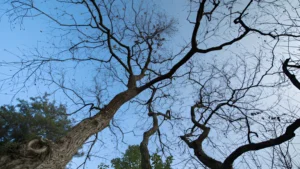






Leave your comment